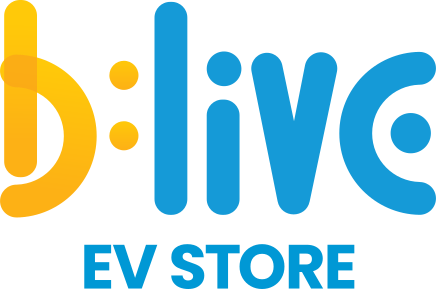Technology is changing spot markets, making them more accessible and efficient but also bringing in how much do forex traders make different risks. It’s very important to balance the use of technology with managing these new types of danger. To find success, those who trade in the future need to keep themselves informed and able to adapt so they can navigate through this changing spot market world. Spot trading in spot markets is one of the most common ways for people to trade, especially beginners. Although it’s straightforward, it’s always good to have extra knowledge of its advantages, disadvantages, and potential strategies. Apart from the basics, you should consider combining your knowledge with sound technical, fundamental, and sentiment analysis.
Spot markets are an integral part of the financial landscape, allowing for immediate trading and establishing real-time market prices. They offer liquidity and efficiency to traders and investors, enabling them to acquire or sell assets quickly. As you explore the fascinating world of finance, understanding spot markets will provide you with valuable insights and a deeper comprehension of how markets operate. In finance trading, spot markets are very important for the trade of stocks, bonds and other securities. They provide a clear and controlled space where buyers and sellers can do business with each other according to present evening doji star meaning market situation without complication from future forecast or contract detail.
Market Exchanges
Whereas in the case of stocks, it is delivered immediately once the payment is made and the ownership is transferred. Once a spot trade is executed, ownership transfer and payment settlement begin. The method of settlement depends on the asset type and market infrastructure. In regulated financial markets, clearinghouses ensure trades are honored, reducing counterparty risk.
- Spot trading in the OTC market uses multiple communication methods to organize trades, including phones and instant messaging.
- But even a mild version — with the unemployment rising from its current low level of 4.1%, while inflation stayed stuck above the Fed’s 2% target — would pose a challenge for the central bank.
- Events related to specific companies like their earnings reports or changes in management team can result in big price swings for individual stocks too.
- Trading is usually completed through brokers of the exchange who act as the market makers.
It showed the biggest increase in long-term inflation expectations since 1993. Stagflation, should it emerge, is hard for the Fed because typically policymakers would lift rates — or keep them high — to combat inflation. Yet if unemployment also rises, the Fed would usually cut rates to reduce borrowing costs and lift growth.
How Spot Markets Work
A positive workplace culture can reduce absenteeism, as engaged employees tend to be healthier and more committed. A fair salary is essential – no amount of praise can compensate for underpayment. Your compensation structure should meet expectations and motivate employees to go above and beyond. The chances of a rate cut at the next meeting in May are now below 50%, according to the data. “We have to be quite careful at this point in how we calibrate our gold trading online response because we’re still seeing a very gradual fall in inflation. We need to accumulate the evidence,” he said.
Usually, it takes two business days to settle a trade in these markets – this timeline is known as T+2 in finance terms. The quick settlement cycle of spot markets is very important because it helps keep their prices aligned with changes in supply and demand that happen at any time. Over-the-Counter (OTC) Markets trade assets through a distributed broker-dealer network. They relish the true essence of the spot market and similar to a lot of centrally controlled exchanges and allow traders to handle the negotiations “on the spot”. OTC Markets are not regulated by a central authority and conclude trades without imposing restrictions on price, asset quantity and other transaction terms. As most of the trading orders on the OTC market are filled in private, this type of market offers a personalized service as opposed to seller anonymity in large corporations.
Common Uses in Trading
- And it’s also looking at its options for new multibillion-dollar power contracts signed with Massachusetts and New York for transmission projects slated to come online over the next 15 months.
- Prices in these markets, which are openly set, can be seen during trading times with real-time visibility.
- The TabTrader app allows users to track price changes for more than cryptocurrencies in real time.
- But, they also come with big risks like sudden price changes and downturns that affect the whole market.
- Spot market, as the name implies, is the market where dealings take place on the spot.
- A disadvantage of the spot market is taking delivery of the physical commodity.
Buyers and sellers create the spot price by posting their buy and sell orders. In liquid markets, the spot price may change by the second or even within milliseconds, as orders get filled and new ones enter the marketplace. They are also sometimes called spot trades since the expiring contract means that the buyer and seller will be exchanging cash for the underlying asset immediately.
Spot Market and Exchanges
If businesses and consumers expect higher costs, they may take steps that push up inflation, like demanding higher wages, which in turn can force companies to raise prices to offset higher labor costs. For now, like businesses and consumers, the Fed is grappling with a huge amount of uncertainty surrounding the economic outlook. But even a mild version — with the unemployment rising from its current low level of 4.1%, while inflation stayed stuck above the Fed’s 2% target — would pose a challenge for the central bank. As the Fed prepares to meet Tuesday and Wednesday, the central bank and its chair, Jerome Powell, are potentially headed to a much tougher spot.
Managing Risk in Spot Markets
Financial assets and securities are traded directly between brokers, traders, and dealers. Spot trading in the OTC market uses multiple communication methods to organize trades, including phones and instant messaging. A decentralized exchange (DEX) is another type of exchange most commonly seen with cryptocurrencies. However, DEXs match buying and selling orders through the use of blockchain technology. In most cases, DEX users don’t need to create an account and can trade directly with one another, without the need for transferring assets onto the DEX.
Trading can be carried out on an electronic trading platform or a trading floor. Electronic trading platforms have made trading more efficient, where prices are determined instantaneously, given the large number of trades in some exchanges. This is why they are also referred to as physical markets or cash markets because trades are immediate. Both the buyer and seller agree to the immediate transfer of funds even though transactions settle on different schedules. For instance, a stock transaction settles on a T+1 basis or the business day after the transaction date.
This quickness plus straightforwardness appeals to different types of traders such as single investors up until big institutions. Spot trading involves directly purchasing or selling financial instruments and assets such as cryptocurrencies, forex, stocks, or bonds. Spot trading occurs in spot markets, which are either exchange-based or over-the-counter (directly between traders). When trading on spot markets, you can only use assets you own – there is no leverage or margin. They help establish the current market price for various assets, enabling market participants to make informed decisions based on real-time data.
Spot Price or Spot Rate refers to the current price of the financial asset. The term “spot price” originates from a phrase “on the spot” and refers to the instantaneousness of spot market transactions. In liquid and volatile markets, such as crypto markets, asset prices may vary by the second as the existing orders are being completed and the new ones enter the market.
High instability might show itself strongly in times of economic or political uncertainty, creating unpredictable movements within the market. Liquidity is usually good but can disappear during stress on the marketplace making it hard to carry out big transactions without affecting prices much. To conclude, technology has brought changes to spot markets that make them easier to reach and faster.
For instance, if you decide to purchase 100 shares of XYZ Company at a market price of $50 per share, you would initiate the trade on a spot market platform. Once a willing seller is found, the transaction is executed, and 100 shares are transferred to your account, with the corresponding payment made to the seller. Swings in commodity prices like oil or gold might suggest shifts in economic situations such as inflation or growth predictions. Large fluctuations in spot prices could imply investor doubtfulness or upcoming adjustments within the market. Traders need to handle volatility and market risk, including the potential for margin calls if trading with leverage.

